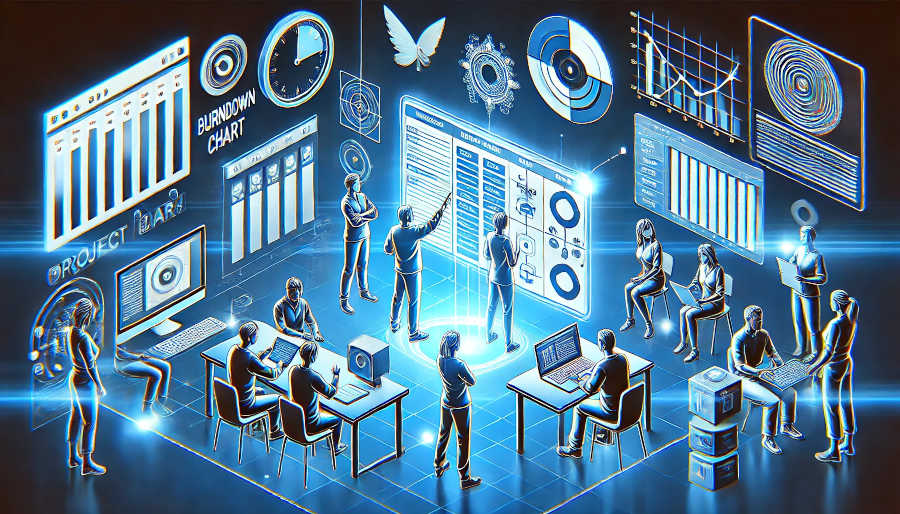Stand-up meetings are not just about status updates; they are a platform for fostering collaboration and problem-solving. Unlike traditional meetings, which can often be lengthy and unfocused, stand-ups are concise and structured, ensuring that time is used productively. The format typically involves each team member answering three key questions: What did I accomplish yesterday? What will I work on today? Are there any blockers or obstacles? This simple yet powerful framework keeps everyone informed and engaged, while also identifying potential issues early. As a result, teams can adapt quickly, maintain momentum, and achieve their objectives more efficiently.
The benefits of stand-up meetings extend beyond immediate project outcomes. They also contribute to building a stronger team culture by encouraging regular interaction and mutual support. When team members share their progress and challenges, they develop a deeper understanding of each other’s roles and responsibilities. This fosters empathy and collaboration, as individuals are more likely to offer help or share insights when they recognize a colleague’s struggle. Over time, this collaborative mindset becomes ingrained in the team’s dynamics, leading to higher levels of trust, innovation, and overall performance.
The Role of Stand-Up Meetings in Enhancing Transparency
Transparency is a fundamental principle of effective teamwork, and stand-up meetings play a crucial role in promoting it. By requiring each team member to share their progress and plans, these meetings ensure that everyone is on the same page. This level of openness eliminates ambiguity and reduces the risk of misunderstandings, which can derail projects. When team members are aware of what their colleagues are working on, they can better coordinate their efforts and avoid duplicating tasks. This not only saves time but also enhances the overall efficiency of the team.
In addition to improving task coordination, transparency in stand-up meetings fosters accountability. When individuals publicly commit to their daily goals, they are more likely to follow through on their commitments. This sense of responsibility drives productivity and ensures that tasks are completed on time. Moreover, the regular nature of stand-up meetings creates a consistent feedback loop, allowing team members to track their progress and make adjustments as needed. This iterative process helps teams stay aligned with project objectives and adapt to changing circumstances.
Transparency also empowers teams to address challenges proactively. By openly discussing blockers or obstacles, team members can collectively brainstorm solutions and offer support. This collaborative problem-solving approach not only resolves issues more effectively but also strengthens the team’s ability to handle future challenges. In this way, stand-up meetings create a culture of openness and resilience, where teams are better equipped to navigate the complexities of project management.
Fostering Collaboration Through Regular Communication
Regular communication is the backbone of successful collaboration, and stand-up meetings provide a structured platform for this purpose. By bringing the team together daily or weekly, these meetings ensure that communication flows consistently and effectively. This regularity helps prevent information silos, where critical details are confined to a few individuals. Instead, knowledge is shared across the team, enabling everyone to make informed decisions and contribute meaningfully to the project.
The collaborative nature of stand-up meetings is further enhanced by their interactive format. Unlike traditional meetings, where information is often presented in a one-way manner, stand-ups encourage dialogue and engagement. Team members are invited to ask questions, provide feedback, and offer suggestions, creating a dynamic exchange of ideas. This interaction not only enriches the quality of discussions but also fosters a sense of collective ownership over the project. When everyone feels heard and valued, they are more likely to invest their energy and creativity into achieving shared goals.
Another key aspect of stand-up meetings is their ability to build trust and rapport among team members. By sharing their successes, challenges, and plans, individuals develop a deeper understanding of each other’s perspectives and working styles. This mutual understanding lays the foundation for stronger relationships and smoother collaboration. Over time, these connections translate into a more cohesive and high-performing team, capable of tackling complex projects with confidence and synergy.
Addressing Challenges and Maximizing the Impact of Stand-Up Meetings

While stand-up meetings offer numerous benefits, they are not without challenges. One common issue is the tendency for meetings to become too lengthy or unfocused. To address this, it is essential to adhere to the meeting’s time limits and structure. Keeping stand-ups short and to the point ensures that they remain productive and do not disrupt the team’s workflow. Additionally, facilitators should encourage participants to stay on topic and avoid unnecessary details, ensuring that the focus remains on progress and blockers.
Another challenge is ensuring consistent participation and engagement from all team members. In some cases, individuals may be hesitant to speak up or share their challenges, leading to incomplete information. To overcome this, facilitators should create a supportive environment where everyone feels comfortable contributing. Emphasizing the importance of honesty and collaboration can help break down barriers and encourage more open communication. Furthermore, recognizing and celebrating achievements during stand-ups can boost morale and motivate team members to actively participate.
Finally, it is crucial to continuously evaluate and refine the stand-up meeting process. Teams should regularly assess the effectiveness of their meetings and make adjustments as needed. For instance, if certain topics consistently require more time, they may be better addressed in separate discussions. By tailoring the stand-up format to the team’s specific needs, organizations can maximize its impact and ensure that it remains a valuable tool for promoting collaboration and project success.
Summary
Stand-up meetings are a powerful tool for promoting team collaboration in project management. By fostering transparency, accountability, and regular communication, these meetings enable teams to work more effectively and achieve their goals. The structured format of stand-ups ensures that time is used productively, while the interactive nature encourages open dialogue and problem-solving. Over time, these practices build trust and strengthen relationships among team members, creating a cohesive and high-performing unit.
However, to fully realize the benefits of stand-up meetings, teams must address potential challenges such as meeting length and participation. By adhering to time limits, creating a supportive environment, and continuously refining the process, organizations can maximize the impact of these meetings. When implemented effectively, stand-up meetings become more than just a routine; they transform into a cornerstone of team collaboration and project success.
In conclusion, stand-up meetings are an indispensable practice for modern project management. They provide a platform for teams to align, communicate, and collaborate, ultimately driving better outcomes. By embracing the principles of transparency, accountability, and regular interaction, teams can harness the full potential of stand-up meetings and achieve their objectives with greater efficiency and synergy.
FAQ
1.How long should a stand-up meeting last?
A stand-up meeting should typically last no longer than 15 minutes. The goal is to keep the meeting concise and focused, ensuring that it remains productive and does not disrupt the team’s workflow.
2.What should be discussed in a stand-up meeting?
Each team member should briefly answer three key questions: What did I accomplish yesterday? What will I work on today? Are there any blockers or obstacles? This format ensures that the meeting stays on track and addresses critical issues.
3.How can we ensure everyone participates in stand-up meetings?
Facilitators should create a supportive environment where everyone feels comfortable contributing. Encouraging honesty, recognizing achievements, and emphasizing the importance of collaboration can help motivate team members to actively participate.
ARTICLE TITLE :How stand-up meetings promote team collaboration ,AUTHOR :ITpmlib

















